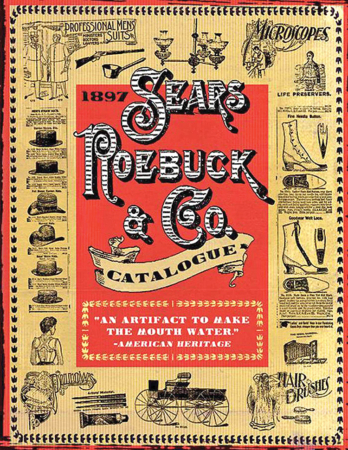Victoria’s Secret is out and its bye-bye Lycoming Mall.
The boudoir style lingerie retailer recently announced that it is closing 235 stores across the country, including the Pennsdale location.
Women banishing bras or passing on peignoirs is not the reason for the closures. The reason? Online shopping. Bath & Body Works will also be shuttering their Lycoming Mall store because sales have gone down the drain for the same reason. Online shopping.
Who would have guessed 25 years ago that shopping online (if they knew what that term meant) would revolutionize the retail landscape, forcing tens of thousands of storefronts to go dark? Locally, over the past few years, there’s been a mass exodus of stores that left the Lycoming Mall.
The closings became more apparent when Macy’s left in March 2017. From then on its been a domino effect that’s taken down such stores as A.C. Moore, Bon Ton, EB, Friendly’s, FYE, GNC, Gander Mountain, Gander Outdoors, Gymboree, Hollister, Hot Topic, JCPenney, Kitchen Collection, Littman Jewelers, Macy’s, Payless Shoes, Pier 1 Imports, Piercing Pagoda, Regis, Sear’s, Stoltzfus Wood Craft, Subway, Toys R Us, Victoria’s Secret, Vitamin World, and Yankee Candle.
According to Forbes Magazine, over 9,000 retail stores closed in 2019. With the Coronavirus still going strong and millions of Americans out of work, it appears the retail apocalypse is far from over.
It’s not surprising that Amazon has dominated retail sales; the 26-year-old company is the largest online retailer and second-largest retailer in the world. In 2019 Amazon’s sales were a staggering $280.5 billion.
With department stores becoming an endangered species, it is hard to imagine a time not that long-ago Sears was the largest retailer in America. Sears was a staple in small towns, suburban shopping malls, and in busy cities.
The store has become more of a memory to reminisce about than a shopping destination for folks that live near one of the few remaining stores scattered across the country.
For the past several years, Sears has been on life support, and its prognosis is looking dimmer each day. It’s a far cry from the company that boldly changed the way people shopped with the debut of the Sears Roebuck mail-order catalog in 1893. (Sears is often credited for founding the first mail-order catalog; however, that honor goes to Tiffany & Co. for their 1845 Tiffany’s Blue Book.)
Sears improved the mail order experience by offering more merchandise and made the ordering and return process easier. The catalog was an instant hit with its wide range of quality and affordably priced items that individuals could order from the comfort of their own home. No longer would shoppers feel pressured by aggressive salesclerks needing to make a sale.
No longer were folks that lived in rural areas forced to drive into the nearest town for their shopping or be dependent on the limited selection and higher prices at the local general store. Sears made sure the variety was extensive including china, chairs, clothing, curtains, housewares, jewelry, feather pillows and feather beds, toys, trowels, towels, tools, furniture, waffle irons, wallets, washing boards, kitchen stoves and stovepipe hats, gadgets, and gizmos.
Mixed in with the mixing bowls and mustache wax, you could find items that were a little quirky, at least by today’s standards. Shoppers would find an old age eye test, saddles, gravestones, corsets, carriages (the horse-drawn variety), motor carriages (no horse required,) vegetable pills, and arsenic wafers (as a facial cleanser) and washable business suits.
With a Sears catalog in hand, one could find everything they needed to set up housekeeping, including the actual house.
From 1908 to 1940, Sears catalog offered house kits that would arrive via boxcar and included everything to build a home from nails and doors to precut wood, shingles, and even the kitchen sink. Sears offered more than 300 different designs that ranged from a three-room cottage with an outhouse to an efficient bungalow to a grand two-story home with servant quarters.
According to Sears, a larger kit contained more than 30,000 parts weighing 25 tons. The store claimed a man of “average” abilities could assemble the home in 90 days. Depending on when the kit was purchased, the homes were priced from about $600 to $6,000. Between 70,000 to 75,000 homes were sold. Sears kit homes were the American dream delivered in a boxcar.
Sears was not the Amazon of its day; Sears was much more. The retailer was a part of the community and part of American life. And it all started with a hefty mail order catalog.
Comparing Sears 1893 mail order catalog to today’s highly advanced online shopping and they seem worlds apart. Guess what? What’s old is new again.
With the 1893 mail order catalog, someone would look at thousands of images of merchandise, submit their order and payment and wait for the order to arrive at their door.
With 2020 online shopping, someone looks at thousands of images of merchandise, submit their order and payment and wait for the order to arrive at their door.
Online shopping. The modern way to shop like its 1893.
Sears Catalog Facts
• Sears discontinued its famed catalog in 1993.
• Before she made it big, Lauren Bacall was a model for the catalog.
• Norman Rockwell’s work graced the cover of several catalogs.
• Some issues of the famed catalog boasted 1,000 pages.
• Sear’s introduced its Christmas catalog in 1933.
• In 1968, the Christmas catalog earned the nickname “Wish Book.”





Leave a Comment
Your email address will not be published. Required fields are marked with *